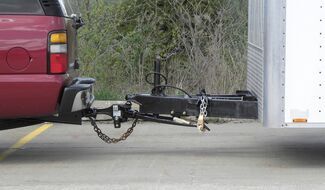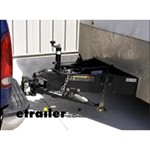
Timbren Rear Suspension Enhancement for 2010 Honda Pilot
Question:
Ok so here is the thing. From what I have researched the Timbren bump stops are supposed to be longer to provide that extra support and help to avoid rear sag and such. My research shows that these bump stops ride just above the axle maybe an inch higher, so the normal bumps in the road just use the springs and the larger bumps in the road would make the bump stops connect engage the axle. Timbren claims that factory bump stops may average to ride above your axle around 3 inches, so the Timbrens are longer, so provide the need extra support. Drum roll..., my factory 2010 Honda Pilot bump stops in the springs already ride less than an inch above the axle without additional weight... If I get these replacement bump stops will they go on and ride just the same? Are they really longer than my factory bump stops? Are they stiffer maybe? I noticed this Timbren model number services all generation of Pilot, 1st and 2nd. Your telling me there were no suspension changes from 1st to 2nd generation, I doubt that. Maybe when the 2nd gen came out in 2009 the bump stops were longer?? I need these to help tow a 4,000 pound boat. I do not want to install air bags, already use those on a different vehicle and maintenance on those are a nightmare. New bags every 1 1/2 years, then the constant air loss and stiff ride with the required 5psi, exhaust burning air lines, air lines pop off nipple on bag. Please help. I would hate to purchase these, pay for a mechanic to put them on, then discover the factory and aftermarket bump stops work the same. If that happens can I return them without penalty? Or save me the hassle and tell me ALL THE DETAILS in a reply.
asked by: Travis A
Expert Reply:
Although the Timbren springs might sit at roughly the same level above the axle, they are constructed completely differently. The factory bump stops are intended to keep the suspension and axle from bottoming out against the chassis of the vehicle. The Timbren springs are designed to become progressively more stiff as weight is added to the vehicle. It's not the length of the spring, but the way it's constructed and the way it behaves when weight is applied to it that's important.
Keep in mind that the Timbren springs are intended to stiffen the suspension when it's under load and to help combat rear end squat. It will NOT increase the weight bearing capabilities of your Pilot.
You're correct that the suspension of the 1st and 2nd generations of the Pilot aren't identical. Many elements of the suspension could have changed but because the Timbren springs haven't changed from generation to generation it seems that the structure and placement of the factory bump stops did not change.
The Timbren springs are a passive system. They will not come into play unless weight is added to the rear of the vehicle. This is desirable because it won't affect the ride of the vehicle unless you're towing or you have cargo loaded in the back. You won't need to add or remove air from the system, and the springs are covered by a lifetime limited warranty.
The most effective way of dealing with vehicle squat caused by hitching a trailer would be to use a weight distribution system. Weight distribution systems are classified by the fully loaded and ready to tow tongue weight of the trailer, plus the weight of anything loaded in the cargo area of the Pilot behind the rear axle. For instance, the tongue weight of a trailer is typically 10-15 percent of its weight (boat + trailer.) Because boats have the engine at the rear, the tongue weight of a boat and its trailer are at the bottom end of that range.
I'll link you to an FAQ article that explains how weight distribution works, as well as to an FAQ showing how to determine the tongue weight of your boat and trailer.
If you click the provided link, you can see our return policy.

Product Page this Question was Asked From
Timbren Rear Suspension Enhancement System
- Vehicle Suspension
- Rear Axle Suspension Enhancement
- Jounce-Style Springs
- Standard Duty
- Timbren
more information >
Featured Help Information
Instructions
Miscellaneous Media

Continue Researching
- Shop: Timbren Rear Suspension Enhancement System
- Shop: Suspension Enhancement
- Search Results: rear axle suspension enhancement
- Video: Timbren Rear Suspension Enhancement Installation - 2016 Honda Odyssey
- Q&A: Can Weight Distribution and Rear Helper Springs be Used Together on a 2007 Honda Pilot
- Q&A: Timbren Suspension Enhancement Recommendation for a 2008 Honda Pilot
- Shop: Redarc Tow-Pro Liberty Brake Controller - Dash Knob - 1 to 2 Axles - Proportional
- Shop: Universal Wiring Harness for Redarc Tow-Pro Trailer Brake Controllers
- Shop: Universal Installation Kit for Trailer Brake Controller - 7-Way RV and 4-Way Flat - 10 Gauge Wires
- Shop: Wire Loom Clamp - 1/2" Diameter Opening- Metal with PVC Sleeve - Qty 1
- Search Results: etbc7
- Search Results: 11755
- Search Results: red69fr
- Search Results: a0500
- Search Results: red24fr
- Shop: Brake Controller
- Video: Review of Redarc Trailer Brake Controller Parts - Universal Wiring Harness - RED69FR
- Video: etrailer Behind the Scenes with the Universal Installation Kit for Trailer Brake Controllers
- Video: Review of Redarc Trailer Brake Controller - Tow Pro Liberty Proportional Controller - RED24FR
- Shop: Trailer Wiring
- Video: Trailer Brake Controller Installation - 2007 Honda Pilot ETBC7
- Video: Choosing the Right Trailer Wiring
- Q&A: What is the Difference Between a Class II and a Class III Hitch?
- Article: Brake Controller 7- and 4-Way Installation Kit (ETBC7)
- Shop: Trailer Hitch
- Search Results: trailer hitch
- Shop: 7- and 4-Pole Trailer Connector Socket w/ Mounting Bracket - Vehicle End
- Q&A: What is the Difference Between a 4-Way and 7-Way Trailer Connector
- Article: How to Choose the Right Trailer Hitch Class
- Article: Trailer Wiring Diagrams
































